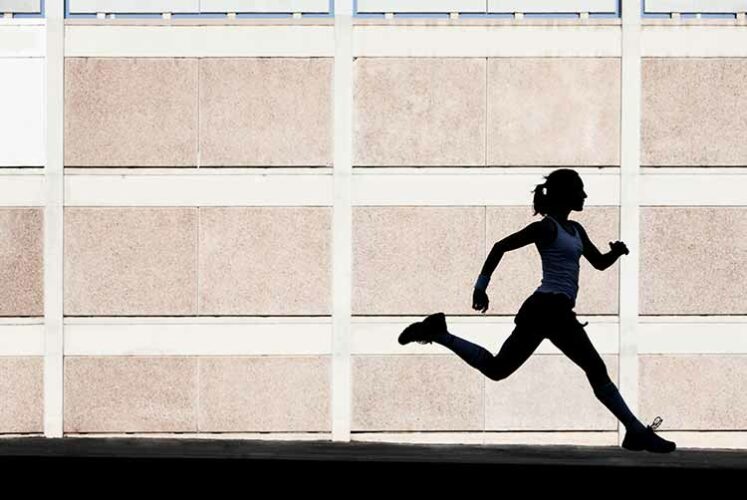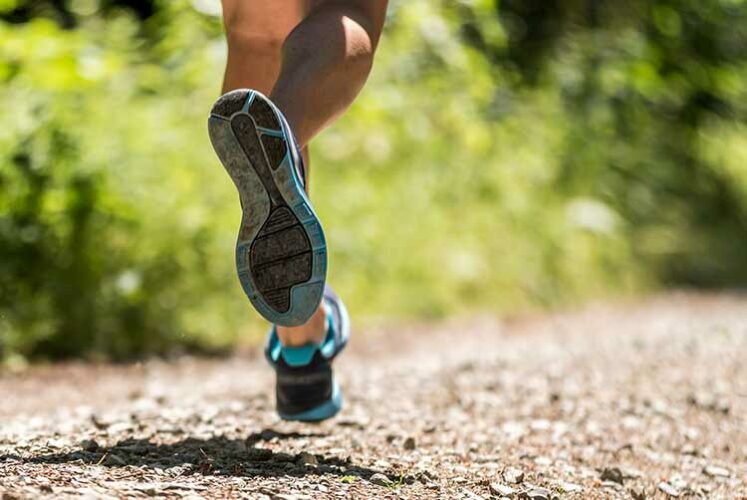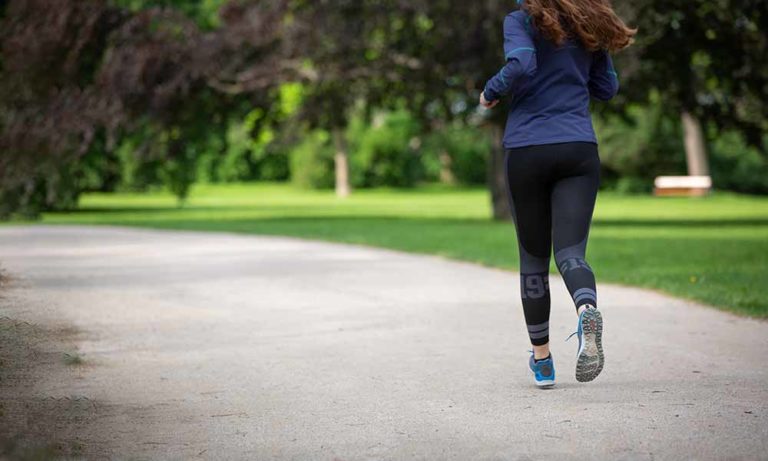6 Common Running Form Mistakes (And Here’s How to FIX Them Quickly)
Running is simple, just grab a pair of running shoes, and put one foot in front of the other. But that doesn’t mean it’s free of pitfalls.
Proper running form can help you save energy, prevent injuries, and increase performance while making sure you are having fun on your runs.
Common running form mistakes are overstriding and heel striking. The most common technical mistakes in running:
- Too long strides
- Heel Striking
- Inefficient arm swing, or rotation or straightening of arms
- Shoulder tension
- Wrong Body Form
- Posture
1. Too Long Strides
The most common problem in running technique involves stride length or stride frequency.

Many runners make the mistake of overstriding, meaning they extend their foot too far in front of their body.
Too long strides, and it looks like you are trying to run in Baywatch style 🙂
The stride should be short, and the rhythm should be tight even in lightweight running. To maintain proper stride length, aim to keep your foot striking under your body.
You can get a good stride rate when you search for music with a rhythm of 160, 170, or 180 beats per minute, and run accordingly.
You can start from 160, but the optimal and most economical way to run a lightweight run is 170-180 strides per minute.
And remember: Overstriding might cause injuries and negatively impacts running efficiency.
2. The Heel Striking
The slow strike frequency typically involves a heel striking. It is another common mistake in running technology.

If the foot comes to the ground beyond the center of gravity, a heel strike has occurred.
For most runners, some form of mild heel strike is probably the best way forward because it is easy to learn and it’s pretty reliable. But as every runner is different, the issue of one footstrike pattern being better than another is complicated. And changing existing patterns can cause more problems than it solves.
When you focus on proper posture and work towards a quicker rhythm or cadence, it will help reduce overstriding and extra heel striking automatically.
3. Inefficient Arm Swing, or Rotation or Straightening of Arms
Most people will probably settle into the arm swing that is most efficient for them. But anyway arm-related errors are quite common.

There are challenges, especially when the pace is growing. Your hands may open from side to side, causing the upper and middle body to rotate too much. A small circular motion does not hurt, as it can bring relaxation to running.
If you keep your phone and water bottle in your hand while running, it can lead to bad running form. If your other arm moves differently because of extra weight and grip, it affects the legs also. That influences your stride and adds additional stress to muscles.
When you have something in your hands, it means that you use parts of your body differently than you normally would.
In this post, we talk about the best phone holder for running and where to store a mobile phone while running, so that you can move your hands freely.
The hands should be close to the body and go in a relatively straight line.
For both lightweight and fast-paced running, the hands should be at 90 degrees angle.
If your arms are open or raised too high, it causes unnecessary energy consumption in the upper body. You should not straighten your hands in the back or in front.
As long as you swing your arms and keep your shoulders relaxed, it really doesn’t matter if there is some movement across your chest.
Running Technique Exercises for Your Arms
Check hand position in front of the mirror
Bend your hands from the forearm to 90 degrees. Put your fingers lose in the fist. Move your hands rhythmically even and behind. Make sure your hands do not exceed the center line of your body or make extra lateral movements.
Run with hands behind your back
Put your hands relaxed behind your back and run for a short distance briskly. Then swing your arms normally, and notice the significance of arm movement to your run.
4. Shoulder Tension
Shoulder tension also occurs when the speed increases.

In lightweight running, this is rarely a problem, but at a faster pace, some of the runners do so. When shoulders are tight, it gives unnecessary stress to the body.
5. Upper Body Rotation
The upper body position is also an important part of the running technique.

There shouldn’t be a sideways movement, and all energy should go to move forward movement.
Posture should stay up. Good posture is supported by being able to keep the stride frequency high enough and to come down with a mild heel strike.
Various dynamic and static movements to the center body are useful for runners. The middle and upper body must be able to stay sufficiently tight to maintain good posture.
6. Posture
In good posture, you keep the spine straight and the shoulders back with a slight forward lean.

Keep your head straight up, and remember to look forward. Keep the torso stable, with the entire body facing forward. Stay relaxed throughout the body.




